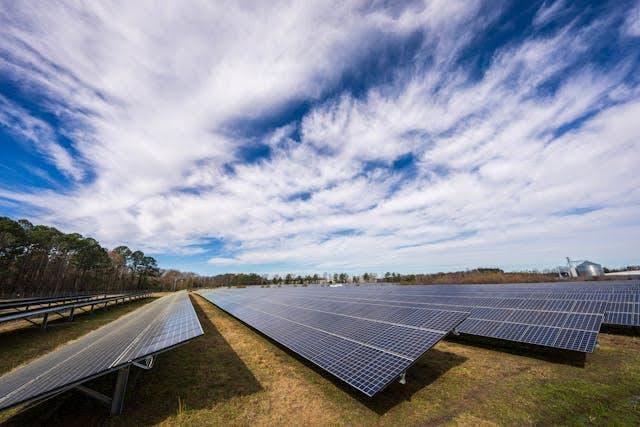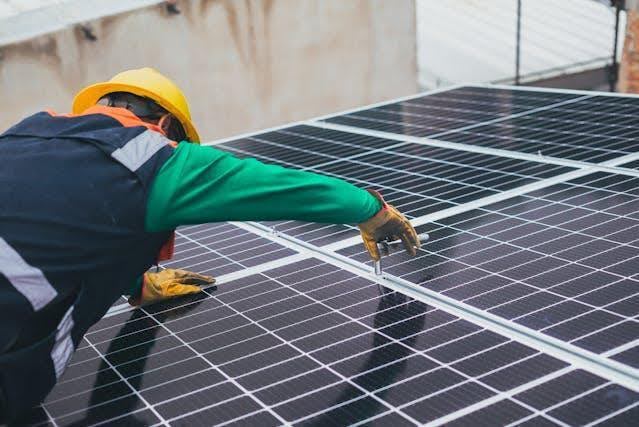Table of Contents
Solar power is gaining unprecedented importance, driven by the need for sustainable and renewable energy sources. As the demand for renewable energy grows, innovative technologies are emerging to meet this need. This article will highlight the solar power technologies making waves in 2024, focusing on the most impactful advancements. We chose these top 5 technologies based on their efficiency, scalability, and potential to transform the energy landscape. These innovations promise to enhance energy production while reducing our carbon footprint. By adopting these cutting-edge solutions, we can achieve a sustainable future.
Solar Power Technologies Making Waves in 2024: Perovskite Solar Cells
Perovskite solar cells are a cutting-edge technology transforming solar energy capture. They are made from a unique crystal structure at low temperatures, allowing for higher efficiency at lower costs. In contrast, traditional silicon-based cells require high temperatures and complex fabrication. This makes them ideal for commercial applications. They can be integrated into building materials, creating energy-generating windows and facades. Perovskite technology offers vast potential for urban settings where space is limited. Recent breakthroughs have significantly improved their efficiency and stability. As a matter of fact, researchers have achieved efficiency rates exceeding 25%, making them competitive with established technologies. In short, perovskite solar cells represent a major advancement in solar technology, combining high efficiency with cost-effectiveness. Their unique properties and recent innovations position them as a leading solution for sustainable energy.
Bifacial Solar Panels: Harnessing Light from All Angles
Bifacial solar panels are another innovative technology that captures sunlight from both sides. Unlike traditional panels that only absorb light from the front, bifacial panels utilize the reflected light from surfaces like the ground or water, significantly boosting energy output. Bifacial panels can increase energy production by up to 30% compared to traditional panels. Also, they have enhanced durability, as they often come with a glass back sheet that protects the cells from environmental damage. In recent years, the installation of bifacial panels has surged. According to industry reports, the global capacity of bifacial solar installations will grow substantially, driven by their high efficiency and long-term reliability.

Solar Street Lights: Illuminating the Future
Understanding the basics of solar street lights is essential for addressing frequently asked questions about their functionality and benefits. Solar street lights work by harnessing energy from the sun through solar panels, which convert sunlight into electricity. This energy is stored in batteries and used to power LED lights during nighttime. The system is efficient and self-sustaining, requiring minimal maintenance. In short, the benefits of solar street lights include significant energy savings, a reduced carbon footprint, and low upkeep costs. These lights are environmentally friendly and cost-effective, making them an ideal solution for both urban and rural settings. Examples of successful implementations can be seen in cities like Barcelona and small communities in India, where solar street lights have improved safety and reduced energy expenses. The versatility and effectiveness of these systems highlight their potential for widespread adoption, illuminating a sustainable future.
Floating Solar Farms: Water-Based Energy Solutions
Floating solar farms are one of the noteworthy solar power technologies making waves in 2024, offering a sustainable and efficient solution to energy generation. This concept maximizes the use of space by installing solar panels on bodies of water, making it ideal for areas with limited land availability. But these farms offer several other benefits. They reduce water evaporation by providing shade. They also minimize land use, preserving valuable terrestrial ecosystems. Floating solar farms have been successfully implemented in various countries. For example, Japan has numerous floating solar installations on reservoirs, helping to meet energy demands without using precious land resources. Similarly, India has adopted floating solar technology to address its energy needs while conserving land for agriculture and development.
Solar Energy Storage: Advancing Battery Technology
Recent innovations in battery technology have led us to significant improvements in efficiency, capacity, and lifespan. For instance, lithium-ion batteries now offer higher energy density and longer life cycles, making them more reliable and cost-effective. The benefits of advanced storage solutions are substantial. They increase the reliability of solar power systems and reduce overall costs by minimizing energy waste. Another key point is that many regions and companies have successfully implemented advanced storage technologies. For example, Tesla’s Powerwall has been widely adopted in homes and businesses, providing a reliable energy storage solution. The future of solar storage looks promising. Ongoing research is likely to bring even more advancements, making solar power a more integral part of our energy infrastructure.
Environmental Impact: A Cleaner Tomorrow
Adopting new solar technologies has a significant positive impact on the environment. One of the most crucial benefits is the reduction in carbon emissions. Generating electricity from the sun decreases our reliance on fossil fuels. This shift helps combat climate change and reduces the carbon footprint of energy production. Using solar power instead of coal or natural gas can drastically lower harmful pollutants released into the atmosphere. These pollutants, such as sulfur dioxide and nitrogen oxides, cause respiratory problems and other health issues. Besides, solar power systems produce minimal waste compared to traditional energy sources, contributing to a cleaner environment. Also, solar energy is renewable and abundant. Unlike finite fossil fuels, the sun provides a limitless energy supply, ensuring a sustainable future.

The Economic Impact of Solar Power Technologies
Solar power offers significant economic benefits. It reduces electricity costs for residential and commercial users, leading to considerable savings over time. The solar industry also creates numerous jobs, spanning manufacturing, installation, and maintenance. This job creation bolsters local economies and reduces unemployment rates. Solar power decreases energy costs for consumers, providing long-term financial relief.
Furthermore, solar energy contributes to national energy independence by reducing reliance on imported fuels. Government incentives and subsidies promote solar adoption, making it more accessible to a broader population. Looking ahead, the economic projections for the solar industry remain strong, with anticipated growth driving further job creation and continued reductions in energy costs. The expansion of solar power technology promises a sustainable and economically beneficial future.

Final thoughts
In conclusion, solar power technologies are making waves in 2024. are revolutionizing the energy landscape. From bifacial panels and Perovskite solar cells to transparent solar panels and floating farms, these innovations promise greater efficiency and broader applications. The economic impact is clear: reduced energy costs, job creation, and increased energy independence. Government incentives continue to support growth, and future projections are optimistic. We can achieve a more sustainable and economically stable future by embracing these technologies. The advancements in solar power technology benefit individual consumers while contributing significantly to national and global energy solutions.
